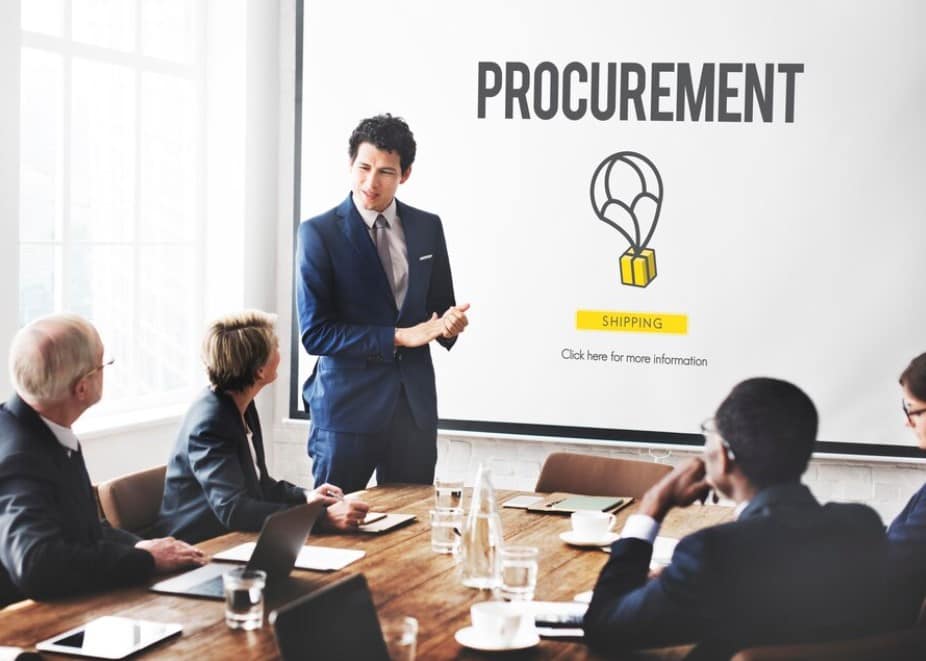In today’s fast-paced business environment, the significance of a robust digital procurement strategy cannot be overstated. Are you prepared to harness the full potential of your procurement approach and propel your organisation forward? This article will guide you through the essential ten steps to create a successful digital procurement strategy. But before diving into the intricacies, ask yourself: Is your procurement strategy equipped to thrive in the digital era?
In a nutshell, success in the digital realm of procurement hinges on a carefully crafted strategy. From leveraging cutting-edge technologies to fostering collaboration, these ten steps are the anchors of a thriving digital procurement approach. Imagine a procurement process streamlined for efficiency, cost-effectiveness, and agility. That’s the promise these steps hold, ensuring your organisation adapts and excels in the ever-evolving digital landscape.
What is Digital Procurement, and Why is it Important?
Digital procurement refers to applying digital technologies and tools to streamline and enhance the various stages of the procurement process. It uses digital platforms, automation, data analytics, and other technological solutions to optimise sourcing, purchasing, vendor management, and payment activities. The primary goals of digital procurement are to improve efficiency, reduce costs, increase transparency, and enable better collaboration throughout the procurement lifecycle.
Procurement is most frequently linked with enterprises because businesses must often request services or purchase items on a large scale. Further, procurement includes and engages all departments to know exactly what to introduce to the company and employees. To summarise, the success of your company’s finances depends heavily on a successful procurement strategy.
Types of Procurement Strategies
Centralised Procurement
Centralised procurement involves concentrated decision-making and purchasing authority within a single entity or department. This approach often results in economies of scale and cost savings, allowing for negotiating bulk purchases and standardised processes across the organisation.
Decentralised Procurement
Decentralised procurement distributes decision-making across different departments or business units. While this approach offers flexibility and customisation based on individual department needs, it may lead to higher costs due to a lack of coordination and synergies in procurement activities.
Strategic Sourcing
Strategic sourcing is a proactive approach that focuses on cultivating long-term relationships with key suppliers. This strategy prioritises value beyond cost savings, emphasising innovation, quality, and reliability in the supply chain.
Category Management
Category management organises procurement by grouping similar products or services into categories. This strategic approach optimises the entire supply chain for each specific type, enabling more effective sourcing, negotiation, and management of suppliers within those defined segments.
E-Procurement
E-procurement leverages digital tools like procurement software to automate and streamline procurement activities. This includes requisition, ordering, and payment processes, increasing efficiency, reducing manual errors, and improving overall procurement cycle times.
How Digital Procurement Can Transform the Procurement Process
Digital procurement has the potential to revolutionise the entire procurement process by leveraging advanced technologies and digital tools. This transformation is characterised by streamlined workflows, enhanced efficiency, and improved transparency throughout the procurement lifecycle. The procurement function is crucial in assisting value-creation processes and operational support.
From sourcing and vendor management to purchasing and payment, digital procurement introduces automation, data analytics, and collaborative platforms, ushering in a new era of agility and cost-effectiveness.
Key Elements of a Successful Digital Procurement Strategy
A successful digital procurement strategy hinges on several key elements that collectively drive efficiency and strategic value. Here are the critical elements of a solid digital procurement strategy:
Executive Support: Executive support is crucial to establish the organisation’s commitment to digital transformation and set the tone for the entire procurement strategy.
Integration with ERP Systems: Seamless integration with enterprise resource planning (ERP) systems provides end-to-end visibility, ensuring a cohesive and interconnected digital procurement process.
User Training: Empowering employees through practical user training enables them to maximise the benefits of digital tools, fostering widespread adoption and proficiency.
Continuous Improvement: Prioritising continuous improvement involves regular assessments and refinements to adapt the digital procurement strategy to evolving business needs and technological advancements.
Data Security: Robust data security measures are essential to safeguard sensitive procurement information, ensuring the integrity and confidentiality of digital transactions.
Performance Metrics: The establishment of robust performance metrics provides a measurable framework for assessing the success and effectiveness of the digital procurement strategy over time.
10 Steps for a Successful Digital Procurement Strategy
We’re here to assist if you need guidance while developing a new procurement strategy. Follow these ten steps to a successful digital procurement strategy.
Assess Current Plans
You should initiate a comprehensive evaluation of existing procurement processes. Developing a procurement strategy starts with identifying operational strengths and weaknesses and delving into the technological landscape within your organisation. This assessment serves as the foundational step for strategic enhancements.
Define and Set Objectives
You should clearly articulate the objectives of your digital procurement strategy. Align these objectives with broader business goals and establish measurable key performance indicators (KPIs) to monitor and gauge progress effectively. You should also identify market maturity, capability, political opportunities, risks, and stakeholder and supplier management.
Invest in Technology
You should allocate dedicated resources to embrace cutting-edge procurement technologies. This involves integrating e-procurement platforms, automation tools, and integrated software solutions. Opt for technologies that seamlessly align with the precise objectives of your digital procurement strategy and are user-friendly.
Data Management and Analytics
You should also lay the groundwork for robust data management practices for a successful procurement solution. Implement advanced analytics tools to extract meaningful insights into spending patterns, supplier performance, and other critical metrics. This data-driven approach is pivotal for informed decision-making and strategic planning.
Supplier Collaboration
Your strategy must cultivate collaborative relationships with key suppliers through digital platforms—leverage technology to enhance communication, transparency, and overall efficiency within the supply chain. A symbiotic relationship with suppliers contributes to smoother procurement processes.
Without it, managing costs effectively, consistently delivering high-quality goods and services, and ensuring the availability of necessary products and services for your business operations can become challenging.
Compliance and Risk Management
Develop and implement robust strategies to ensure compliance with regulations and policies. Integrate sophisticated risk management practices that proactively identify and mitigate potential disruptions, safeguarding the procurement process against unforeseen challenges.
Employee Training
Prioritise the development of your team’s digital capabilities. Provide targeted training sessions to ensure your workforce is well-equipped to navigate and maximise the potential of digital procurement tools. A skilled workforce is integral to the success of any digital transformation initiative.
Workflow Automation
You should implement automation solutions into procurement workflows. This streamline processes and minimises manual errors, leading to an accelerated and more efficient procurement cycle. Automation enhances the overall agility and responsiveness of the procurement function.
Performance Measurement
Establish a systematic framework for measuring the performance of your digital procurement strategy. Regularly assess performance against predefined KPIs, allowing for data-driven insights that guide continuous improvement efforts and strategic refinements.
Continuous Improvement
Cultivate a culture of continuous improvement by regularly reviewing and refining your digital procurement strategy. Stay responsive to feedback, evolving business needs, and technological advancements. This iterative approach ensures the strategy remains adaptive and optimally effective over time.
Benefits of Implementing Digital Procurement Strategies
Here are some of the benefits of implementing an effective procurement strategy:
Improving Supply Chain Resilience through Digital Procurement: The digitisation of procurement processes provides real-time insights, enabling better risk management and contingency planning. This resilience is vital in navigating unforeseen disruptions and ensuring a robust and adaptable supply chain that can withstand challenges.
Engaging Procurement Teams in Embracing Digital Transformation: Adopting digital procurement strategies fosters engagement among procurement teams in the digital transformation journey. It empowers teams to leverage advanced tools and technologies, enhancing efficiency and effectiveness.
Reduced Errors and Risks: Automation in digital procurement minimises manual errors in tasks such as order processing and payment. Additionally, integrating risk management practices helps mitigate potential disruptions in the supply chain.
Improved Collaboration: Collaboration between stakeholders and suppliers is facilitated through digital platforms, fostering better communication and understanding. This collaborative environment enhances relationships and promotes a more cohesive supply chain.
Enhanced Visibility and Control: Digital procurement provides real-time visibility into spending patterns, supplier performance, and overall procurement activities. This transparency enables better control over the procurement process and ensures compliance with policies and regulations.
Adaptability to Change: Digital procurement strategies provide the flexibility to adapt to changing market conditions, supplier landscapes, and business requirements. This adaptability is crucial for staying competitive in dynamic business environments.
Paperless and Sustainable Practices: Digital procurement eliminates the need for extensive paperwork, contributing to eco-friendly and sustainable business practices. This transition to a paperless environment also simplifies record-keeping and compliance.
Conclusion
NSW IT Support distinguishes itself as more than a conventional Managed IT support company in Australia; we excel in providing comprehensive procurement services, encompassing hardware and software procurement. Our hardware procurement services feature an e-commerce platform that delivers an exhilarating online shopping experience to Australian SMEs, corporate entities, and government agencies.
We offer managed services, including overseeing software investments, portfolio management, and adopting cost-effective approaches. Our consulting services extend to defining strategic roadmaps and evaluating the maturity of your software procurement processes. For businesses seeking expertise and successful implementation of digital procurement services in Australia, NSW IT Support is the trusted partner for comprehensive and tailored procurement solutions. It is here to streamline your procurement process. Contact us for expert guidance and tailored solutions in your digital procurement journey.










